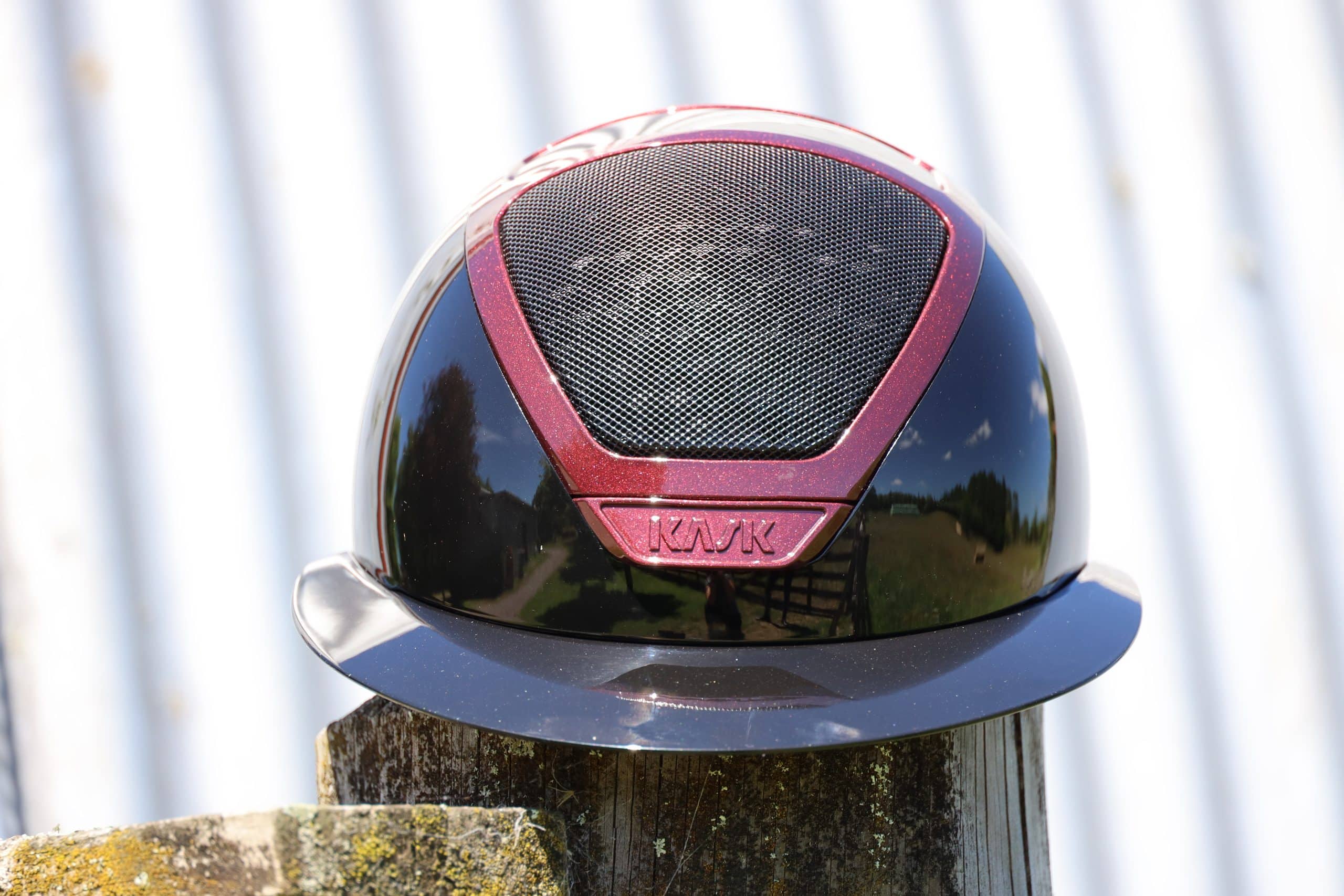Your helmet is your most important piece of safety gear when riding — and KASK helmets are designed with advanced technology to protect your head in the event of a fall or impact. But even the best helmet can lose its protective qualities if damaged, so it’s crucial to regularly check your helmet for signs of wear or damage, especially after a fall. Follow this guide to learn how to check your KASK helmet after a knock.
Why Checking Your Helmet After a Fall Matters
Helmets absorb impact through their inner foam lining, which compresses on impact to reduce the force transmitted to your skull and brain. After a significant fall, this foam can be crushed or cracked — damage that may not always be visible on the outside but seriously compromises your helmet’s ability to protect you in the future.

How to check your Kask – Clear helmet damage
Multiple Small Falls = Big Damage
Many riders assume only a major fall can damage a helmet, but repeated minor impacts or bumps can cause cumulative damage to the helmet’s structure. Just like how many small cracks can weaken a windshield, multiple small impacts can degrade your helmet’s protective integrity — sometimes as much as one big fall.
Because of this, it’s important to:
- Inspect your helmet after any fall or hard knock, no matter how minor it seems.
- Avoid reusing helmets that have been dropped, bumped, or involved in any impact without a thorough check.
- Understand that some damage is internal and invisible, which is why replacement after certain impacts is recommended.
How to Check Your KASK Helmet for Damage
- Visual Check: Look for any visible cracks, dents, or deep scratches on the outer shell. Even small surface damage can indicate deeper problems.
- Foam Liner Inspection: Check the inside foam for compression marks, cracks, or signs that it’s been crushed. Any deformation means the helmet has absorbed an impact.
- Strap & Buckle Condition: Ensure the chin strap and buckles are intact, not frayed, stretched, or broken. A damaged strap compromises helmet fit and safety.
How to check your Kask – listen and see if it makes unusual noisey while under pressure
- Fit & Comfort: After a fall, if your helmet feels loose, wobbly, or uncomfortable, it may have been compromised.
- Manufacturer’s Advice: Follow any specific inspection guidelines provided by KASK with your helmet model.
If you notice any damage, do not continue to use the helmet. Replace it immediately.
When to Replace Your KASK Helmet
- After a major fall or impact: Always replace your helmet if it has been involved in a fall where your head hit the ground or another hard object.
- After multiple minor impacts: If your helmet has been dropped or hit several times over a short period, consider replacing it even if there is no visible damage.
- Every 3-5 years: Helmet materials degrade over time due to wear, sweat, UV exposure, and general use. KASK recommends replacing helmets every 3 to 5 years, depending on usage and care.
- If you notice wear & tear: Signs of aging, such as cracked foam, brittle shell, or worn straps, mean it’s time for a new helmet.
Kask Fall Replacement Warranty
Don’t be afraid to check your Kask after a fall. Kask offers a Crash Replacement Program specifically for equestrian helmets damaged in falls:

Always check your Kask – damage to the inner foam panels
-
Within 1 year of purchase: you’re eligible for a 30% discount on a brand‑new Kask equestrian helmet.
-
Between 1 and 2 years from purchase: the discount reduces to 20%
-
The program is limited to one use per helmet—once you use the discount, that helmet can’t be submitted again. The straps on the helmet must be cut and the helmet discarded.
-
To initiate the process, you must email sa***@*******************co.nz with:
-
Your details and proof of purchase (we should have a copy of this on our system if you purchased it from us)
-
Helmet model and liner size
-
Photos of the damaged helmet, serial label (white label located under the liner)
-
Final Thoughts: Prioritise Your Safety
Your KASK helmet is designed to save your life, but only if it’s in good condition. Treat helmet care and inspection as seriously as training and riding. After every fall, take a few minutes to inspect your helmet carefully, and replace it if there’s any doubt. Remember — a helmet is a one-time-use safety device for impacts, not something to rely on repeatedly after damage.
Need help choosing or replacing your KASK helmet?
Contact the Oakridge Equestrian team for expert advice and fitting support. Your safety is our priority! Always check your KASK!






